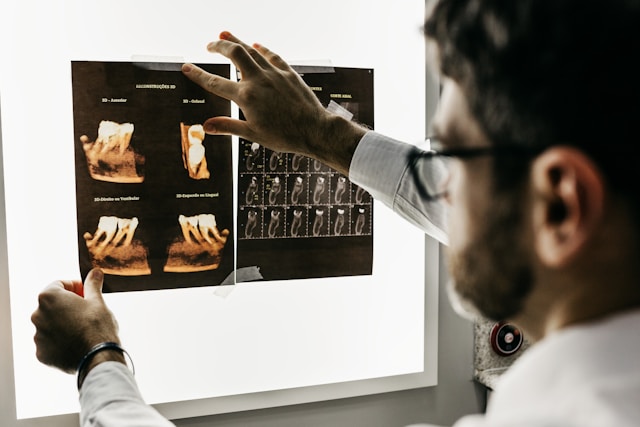NICE backs AI tools to aid clinicians in spotting missed fractures, aiming to reduce errors and ease NHS workload
The National Institute for Health and Care Excellence (NICE) has announced a groundbreaking initiative, recommending the use of artificial intelligence (AI) to assist doctors in detecting fractures on X-rays. This move could dramatically reduce the number of missed diagnoses and speed up the diagnostic process in urgent care settings across England. With radiology staff stretched thin, AI’s integration promises to relieve some of the pressure faced by healthcare professionals in an overburdened NHS.
According to NICE, AI technology has demonstrated its safety and effectiveness, potentially lowering the rate of missed fractures—a common issue in emergency departments, with between 3% to 10% of breaks going undiagnosed. NICE has highlighted four AI tools that are expected to be adopted in England’s urgent care centres, offering support to doctors and radiologists as they review X-rays.
Embed from Getty ImagesOne of the most significant benefits of this technology is its potential to streamline the diagnostic process. Currently, the shortage of radiologists and radiographers, coupled with increasing demand, has made it difficult for healthcare professionals to keep up with the sheer volume of images they must analyse. Vacancy rates in radiology departments stand at 12.5% for radiologists and 15% for radiographers. This shortage has resulted in delays in diagnoses and, in some cases, the need for patients to return for follow-up appointments if fractures are missed initially.
By integrating AI into the diagnostic process, NICE aims to reduce these pressures while ensuring accuracy. AI will not be replacing human expertise; rather, it will serve as a second pair of eyes. A trained healthcare professional will still review every X-ray, but the AI will help by flagging potential fractures that might have been overlooked.
Mark Chapman, NICE’s Director of Health Technology, believes the AI tools will make clinicians’ jobs easier, improving patient outcomes in the process. “These AI technologies are safe to use and could spot fractures which humans might miss, given the pressure and demands these professional groups work under,” Chapman stated. By identifying fractures more reliably, AI could help reduce the number of patients who need follow-up appointments due to errors in initial assessments.
The introduction of AI in radiology is part of a broader trend in the healthcare sector, where technology is being leveraged to improve patient care. AI is already being used in other areas of medicine, such as breast cancer screening, where it helps detect early signs of the disease. The potential for AI to revolutionise healthcare seems limitless, and its application in fracture diagnosis is just one example of how it can help streamline processes and reduce human error.
Despite concerns about AI potentially increasing the number of incorrect diagnoses, NICE has reassured the public that the technology will not lead to an uptick in false positives or unnecessary referrals to fracture clinics. A radiologist will always oversee the results, ensuring that the final judgement is made by a medical professional.
As AI tools become more prevalent in the NHS, they are likely to address some of the staffing shortages that have plagued the healthcare system. NICE believes that using AI alongside human expertise can result in a more efficient and accurate diagnostic process, benefiting both patients and clinicians.
The endorsement of AI in fracture detection comes amid growing scrutiny of generative AI technology worldwide. The safety and reliability of AI tools, particularly in critical areas such as healthcare, have been hot topics in the tech world. However, with NICE’s backing and the proven safety of the AI tools in question, the NHS could be on the brink of a technological shift that will have long-term benefits for patient care.
AI is not just a tool for the future—it’s already helping clinicians detect diseases and conditions that are challenging to diagnose, such as cancers and fractures. By embracing this technology, the NHS is taking a significant step towards modernising its healthcare delivery, improving accuracy, and ultimately saving lives.
As AI continues to evolve, its integration into healthcare will likely expand beyond X-rays. While radiologists and radiographers will remain essential to the diagnostic process, AI can enhance their work by reducing errors, shortening diagnosis times, and improving patient outcomes.
In the face of increasing demand and limited staff, the use of AI in healthcare seems not only innovative but necessary. NICE’s decision to recommend these tools underscores the importance of combining technology with human expertise to tackle some of the NHS’s most pressing challenges. The future of healthcare is digital, and AI is set to play a critical role in that transformation.
